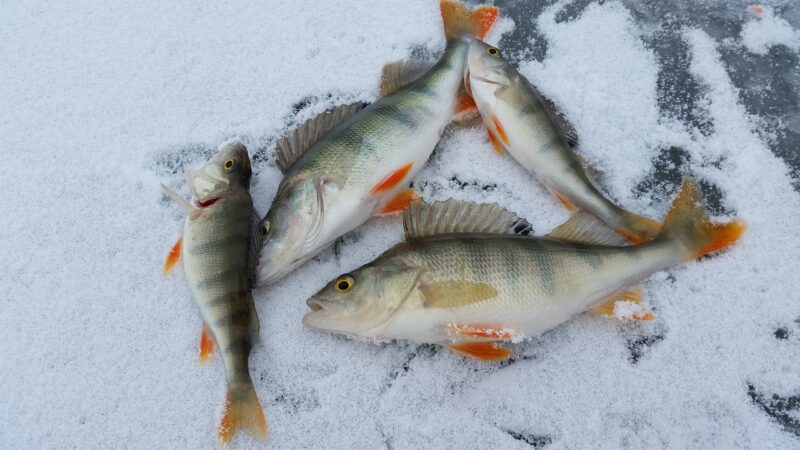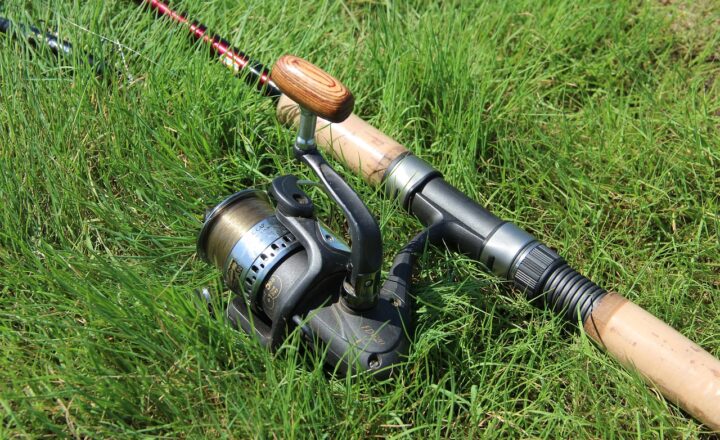A Beginner’s Guide to Ice Fishing: Everything You Need to Know
November 11, 2024

Ice fishing is a unique and exhilarating outdoor activity that allows anglers to enjoy fishing even in the coldest winter months. For many, ice fishing represents not just a means to catch fish but also a chance to connect with nature and spend quality time with friends and family. If you’re new to this winter sport or considering giving it a try, this guide covers everything you need to know to get started.
1. Understanding Ice Fishing
Ice fishing involves drilling holes into frozen lakes and ponds to catch fish beneath the ice. While it may seem daunting or uncomfortable to fish in freezing temperatures, many anglers find the experience rewarding. Key to successful ice fishing is understanding the environment, the types of fish you can catch, and the right gear to use.
Ice fishing typically takes place during the winter months, often from late December to March, depending on the location. Popular fish species for ice fishing include:
- Panfish: Species like perch, bluegill, and crappie are commonly sought after due to their abundance and willingness to bite in colder waters.
- Trout: Many anglers pursue various types of trout that frequent ice-covered lakes, particularly in the spring when they spawn.
- Northern Pike: Known for their size and fight, Northern Pike can be challenging yet thrilling to catch through the ice.
2. Essential Ice Fishing Gear
To ensure a successful and enjoyable ice fishing experience, having the right gear is crucial. Below is a list of basic equipment you’ll need:
- Ice Auger: This tool is used to drill holes in the ice. Manual or powered augers are available, and the choice depends on your preference and budget.
- Fishing Rods and Reels: Ice fishing rods are typically shorter and more sensitive than regular rods. Choose a rod matched to the type of fish you’re targeting, along with a compatible reel.
- Ice Fishing Line: Use a light line with a test level that is appropriate for the fish you are targeting. Consider braid or fluorocarbon for added sensitivity and stealth.
- Bait and Lures: Popular options include live bait like minnows and worms, as well as jigs and other lures specifically designed for ice fishing. Remember to match your bait with the fish species you’re targeting.
- Shelter and Safety Equipment: An ice fishing shelter keeps you warm and protected from the elements. Additionally, always carry safety gear such as ice picks, a first-aid kit, and ice traction devices to prevent slips.
3. Finding the Right Location
Selecting the perfect spot to fish is vital to a successful ice fishing trip. Consider the following factors:
- Depth: Different fish species thrive at various depths. Research local reports or ask seasoned anglers which depths are currently producing good catches.
- Structure: Look for areas with underwater structures like weed beds, drop-offs, rocks, and points where fish tend to congregate. The presence of natural structures can significantly increase your chances of success.
- Local Knowledge: Don’t hesitate to reach out to local fishing shops or online communities to gather intel on productive areas and the latest fishing conditions.
4. Techniques for Ice Fishing
Ice fishing techniques can vary widely based on the species you are targeting and your personal preferences. Here are a few popular methods:
- Jigging: This method involves moving the bait vertically in the water column. Use a light jigging motion to attract fish and entice them to bite.
- Tip-Up Fishing: This technique involves setting a baited line below the ice with a flag to signal when a fish takes the bait. You can often set multiple tip-ups, allowing for increased chances of catching multiple fish during your outing.
- Dead Sticking: This strategy utilizes a baited rod placed in a holder without movement. Often, fish will bite out of curiosity, especially if they are inactive on colder days.
5. Safety Precautions
Safety should always be your top priority when ice fishing. Here are important precautions to take:
- Check Ice Thickness: Ensure the ice is at least 4 inches thick for walking, and ideally 6-12 inches for vehicle use. Always check local reports on ice conditions prior to your trip.
- Fishing Buddy System: It’s always a good idea to fish with a companion for added safety; if something goes wrong, help is just a shout away.
- Dress Appropriately: Wear insulated and waterproof clothing, layered appropriately to keep warm while also allowing for comfort and movement.
6. Tips for a Successful Ice Fishing Experience
To enhance your ice fishing trip:
- Stay Patient: Like any form of fishing, patience is vital. It may take time to find active fish, so be prepared to try different locations and techniques.
- Keep Moving: If you’re not having success after a while, don’t hesitate to change holes or relocate. Sometimes, finding the right spot can make all the difference.
- Stay Organized: Keeping your gear neatly organized helps you transition smoothly from one stage of your fishing trip to another and prevents losing important tools and equipment.
Conclusion
Ice fishing is an enjoyable winter activity that offers relaxation, adventure, and the thrill of catching fish in a unique setting. By preparing adequately and understanding the essentials, you can have a safely rewarding experience on the ice. Whether you’re out for the sport, the companionship, or the peace of nature, ice fishing can create lasting memories during the frosty season.
Remember to respect the environment, adhere to local regulations, and most importantly, have fun on your ice fishing adventure! Happy fishing!








